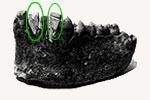History of Dental Implants

In ancient times, the Egyptians used sea shells to replace missing teeth. Slots were carved into the bone of a person’s jaw and the shells were hammered in like little wedges. And all without Novocain!
Thankfully, we’ve come a long way since the Egyptians. Scientific implant therapy was first developed over 50 years ago in Sweden by an orthopedic surgeon and researcher, Dr. Per Ingvar Branemark, who observed that a titanium implant could naturally and predictably bond with bone. This phenomenon was termed ‘osseointegration’.
Since Dr. Branemark placed his first implant four decades ago, several million individuals have enjoyed the benefits of successful, permanent tooth replacement with dental implants.
- From 1983-2000 more than three million people received dental implants.(USA Statistics)
- In 2001, 252 000 implant procedures were performed in the United States.(Millenium Research Group Inc. 2002)
- In 2000, 910,000 implants were placed in the United States. This number is expected to increase at rate of 18% per year. (www.health.enotes.com)
Survey of 104 Individuals Wearing Removable Dentures
- Difficulty with speech – 88%
- Movement of the lower denture – 62.5%
- Lower arch discomfort – 63.5%
- Never wear lower denture – 16.5%
- Upper arch discomfort – 32.6%
- Never wear upper denture – 0.9%
80% of patients treated with implant-supported prosthesis (dentures) judged their
overall psychological health as improved compared with their state while
wearing traditional, removable prosthesis (dentures). (Misch and Misch, 1991)